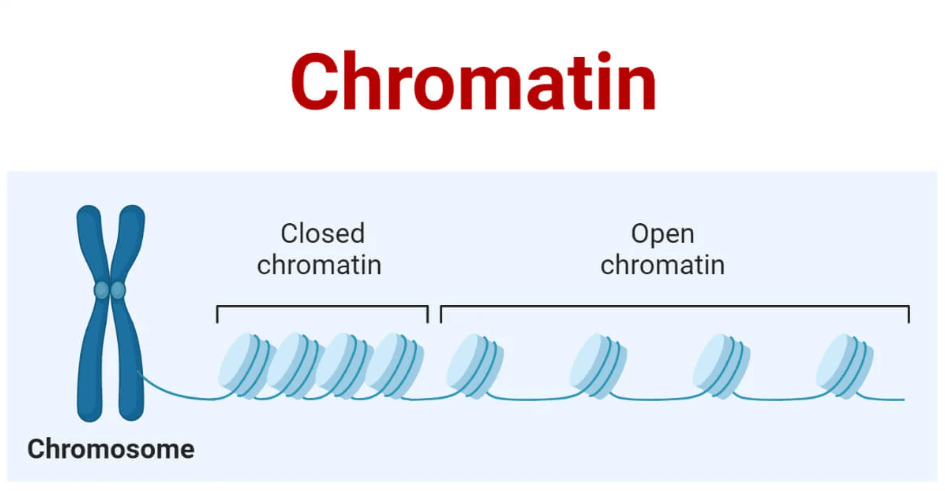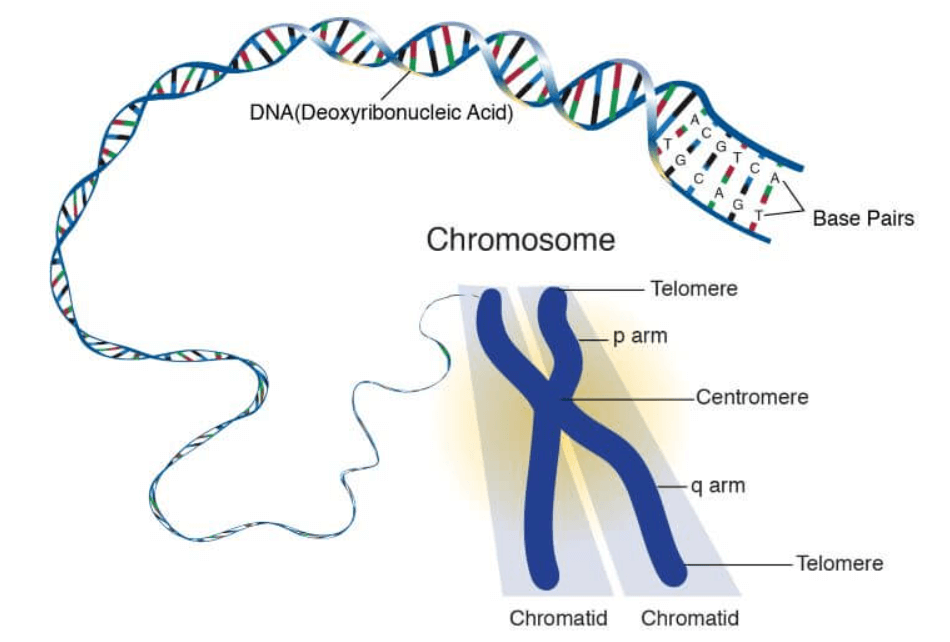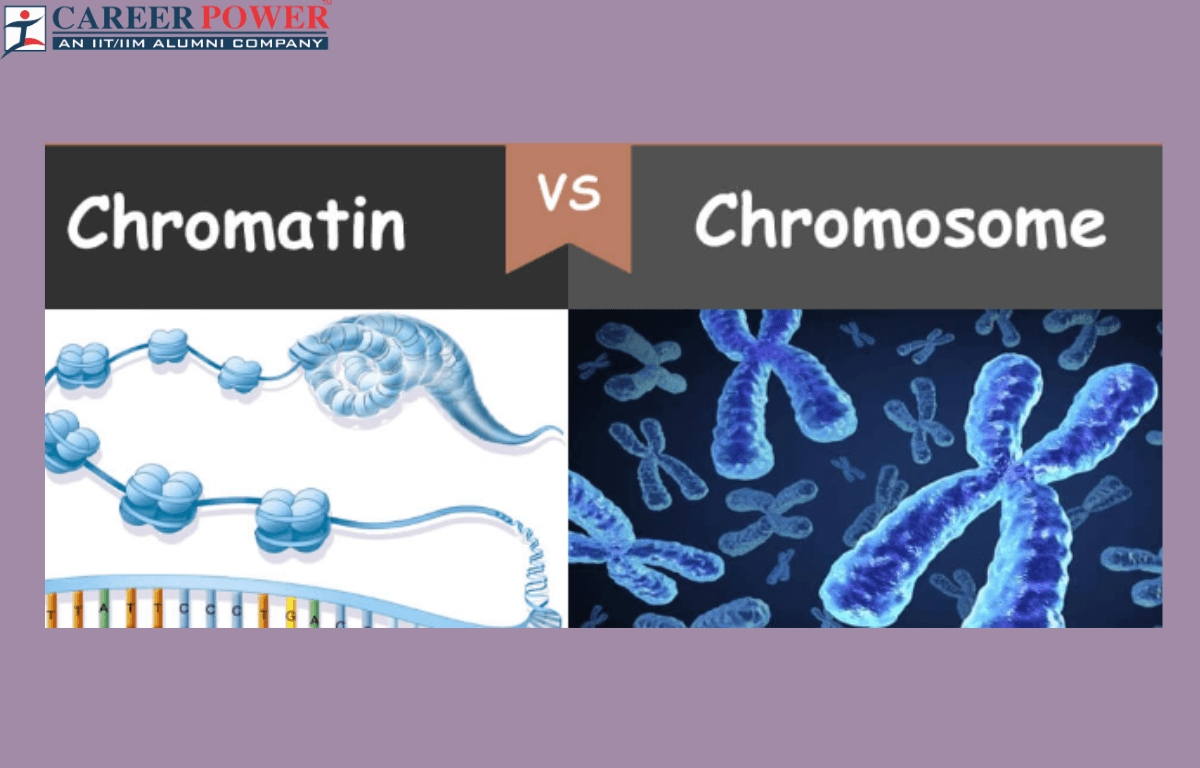Both chromatin and chromosomes are fundamental components of cells, especially in eukaryotes like humans. The organization and functioning of chromatin and chromosomes are essential not only in genetics and cell Biology but also in various fields such as medicine, agriculture, and evolutionary Biology. Here we have briefly described the difference between chromatin and chromosomes below in the article.
Chromatin vs Chromosome
Chromatin is the complex of DNA and proteins in its unwound, diffuse state within the nucleus, while chromosomes are condensed and organized structures formed from chromatin during cell division, ensuring genetic stability and accurate transmission of genetic information to the next generation of cells.
What is Chromatin?
Chromatin is a complex of DNA and proteins found inside the nucleus of eukaryotic cells. It consists of long, thin DNA strands and various proteins, including histones, which help package the DNA into a more compact and dance structure. Chromatin’s primary function is to package DNA efficiently into a smaller volume to fit inside the cell’s nucleus and protect the genetic material. It also plays a crucial role in regulating gene expression and DNA replication. During cell division, chromatin condenses further to form visible chromosomes, ensuring the accurate distribution of genetic information to daughter cells.

What are Chromosomes?
Chromosomes are thread-like structures made of DNA and proteins, found in the Nucleus of eukaryotic cells. They carry genetic information in the form of genes, which are segments of DNA that encode specific traits or functions. Chromosomes are essential for the cell’s functions, including cell division and the inheritance of traits from one generation to the next.

In humans, each cell normally contains 23 pairs of chromosomes. One chromosome from each pair is inherited from the mother, and the other is inherited from the father. During cell division, chromosomes condense and become visible under a microscope. This condensation ensures that the genetic information is accurately distributed to daughter cells. Chromosomes play a vital role in maintaining the stability and integrity of an organism’s genetic material.
Difference Between Chromatin and Chromosome
Chromatin and chromosomes are both structures found in the nucleus of eukaryotic cells, but they have different forms and functions. Here we have discussed a few differences between chromatin and chromosomes in a table form.
| Difference Between Chromatin and Chromosome | ||
| Features | Chromatin | Chromosome |
| Composition | Chromatin comprises DNA, histones, and non-histone proteins. | Chromosomes are made up of DNA, histone proteins, and other structural proteins like topoisomerases. |
| State | Chromatins are found in uncondensed, dispersed form. | Chromosomes are found in condensed, visible under a microscope. |
| Function | Chromatin aids in packaging DNA into a smaller volume to fit in the cell and serves to prevent DNA damage. | Chromosomes are essential for the accurate segregation of DNA during cell division. They ensure that each daughter cell receives the correct number of chromosomes. |
| Visibility | Chromatins are not visible under a microscope. | Chromosomes are visible under a microscope during cell division. |
| Occurrence | Chromatins are found throughout the cell nucleus. | Chromosomes are visible only during specific stages of the cell cycle (e.g., meiosis and mitosis). |
| Structure | Chromatins are loosely packed, long, thin fibers. | Chromosomes are tightly coiled, thick, rod-shaped structures. |
| DNA Packaging | Chromatin helps in packaging long DNA strands inside the cell nucleus. | Chromosomes are highly condensed structures formed from chromatin, allowing efficient storage and organization of genetic material. |
| Gene Expression | Chromatin structure can vary, allowing different levels of gene expression. | Chromosomes contain specific genes and regulatory elements. Gene expression occurs during interphase when DNA is in the chromatin form. |
| Number in a Cell | There are multiple chromatin fibers in a cell nucleus. | There is a specific number of chromosomes in a species; humans have 46 chromosomes (23 pairs). |
| Presence in cells | Chromatins are present in both eukaryotic and prokaryotic cells. | Chromosomes are found in eukaryotic cells. Prokaryotes lack distinct chromosomes. |
Functions of Chromatin and Chromosomes
Chromatin and chromosomes serve several essential functions in cells. Understanding these functions is vital not only for basic biological research but also for fields such as medicine, genetics, and evolutionary biology, where knowledge about chromatin and chromosomes helps in diagnosing diseases, studying inheritance patterns, and exploring evolutionary relationships among species.
- Storage and Protection of Genetic Information: Chromosomes are the carriers of genetic information. They store the instructions necessary for the structure, function, growth, and reproduction of all living organisms. Chromatin helps in packaging and protecting this genetic material.
- Cell Division: Chromosomes play a crucial role during cell division. They ensure that genetic information is accurately replicated and divided between daughter cells during processes like mitosis (for somatic cells) and meiosis (for sex cells). Proper chromosome segregation is vital for the maintenance of genetic stability.
- Gene Regulation: Chromatin structure can regulate gene expression. By condensing or relaxing chromatin, cells can control which genes are accessible for transcription (the process of creating RNA from DNA). This regulation is essential for the specialization of cells and the overall development of multicellular organisms.
- DNA Packaging and Compaction: Chromatin helps in organizing long DNA molecules into more compact and dense structures. This compaction is vital for fitting the entire genome inside the cell nucleus. The packaging also prevents DNA damage, tangling, and ensures efficient utilization of cellular space.
- Repair and Recombination: Chromosomes play a role in DNA repair mechanisms. During repair processes, damaged DNA strands can be replaced or recombined with the help of the information encoded in the chromosomes. This ensures the integrity of genetic material.
- Epigenetic Inheritance: Chromatin modifications can be passed on from one generation of cells to the next. These modifications, known as epigenetic changes, can influence gene expression patterns without altering the underlying DNA sequence. Epigenetic inheritance is crucial for cellular differentiation and development.
- Evolutionary Significance: Changes in chromosome number or structure can lead to speciation, contributing to the evolution of new species. Chromosomal rearrangements and mutations can drive genetic diversity, which is essential for the adaptation and survival of a population over generations.



 50 Vegetables Name for Kids in English a...
50 Vegetables Name for Kids in English a...
 Food Chain: Definition, Types, Examples,...
Food Chain: Definition, Types, Examples,...
 Human Respiratory System: Definition, Di...
Human Respiratory System: Definition, Di...













